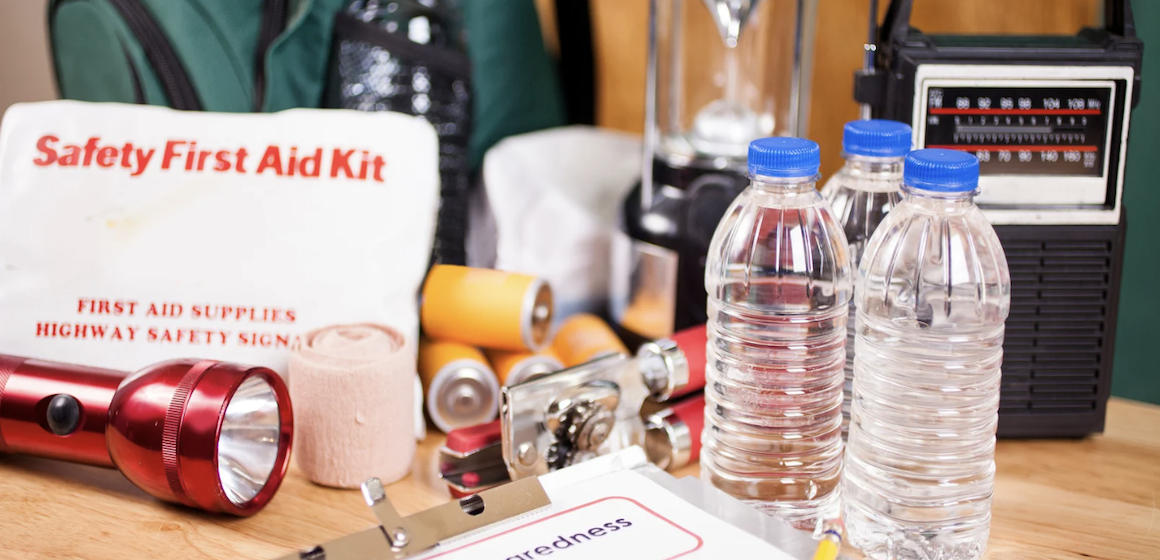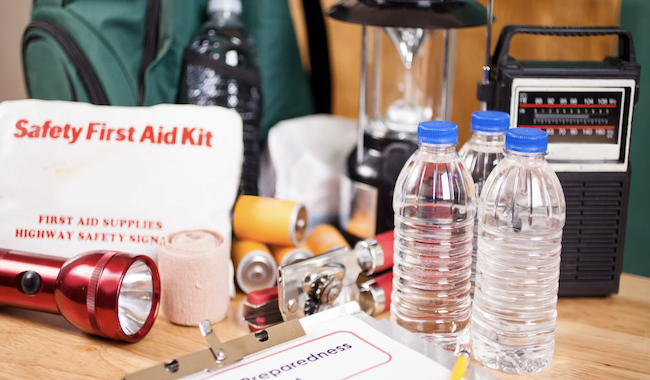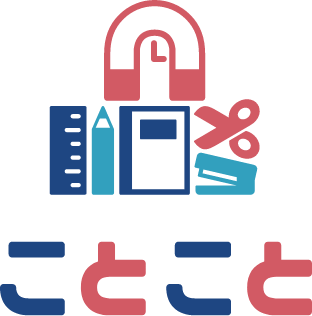

Prepare a Disaster Supply Kit
There are many natural disasters in Japan, including typhoons, heavy rain, heavy snow, floods, landslides, earthquakes, tsunamis, and volcanic eruptions. While you cannot predict natural disasters, you can take steps to prepare by assembling a disaster supply kit and getting into a habit of checking evacuation routes so as to minimize the impact of the unpredictable events.
What to Prepare for a Disaster Supply Kit
A disaster supply kit is a collection of various kinds of goods, and what you need to prepare will differ depending on when and where you will use it. It is a good idea to prepare three different kinds of disaster supply kits: a “portable” kit for use in the event of a disaster when you are away from home, an “evacuation” kit to take with you when you go to an evacuation center from home, and a “stay-at-home” kit for use when taking shelter at home during a disaster.
”Portable” Disaster Supply Kit to Take When You Are Away from Home
While you cannot predict when and where disasters happen, it may be comforting to have a disaster supply kit in your bag when going out. It may be a good idea to have it prepared in a small pouch. Here are the items you should prepare:
○Food:
・Water (about 500ml. Water is more recommended than tea as it can also be used to clean wounds, etc.)
・Candies, energy bars, etc. (quick and easy to eat)
○Cash (you may not be able to use transportation IC cards, apps, and credit cards)
○A small light (due to the possibility of moving during a power outage)
○A whistle (to let others know where you are)
○Mobile battery(s) for smartphone
○Valuables:
・Insurance card ・Driver’s license
○Hygiene products:
・Mask ・Sanitization sheet/spray ・Lightweight emergency blanket (available at 100 yen stores)
○Individual needs (as needed):
・Regular medicine ・Glasses ・Contact lenses ・Hearing aids
“Evacuation” Disaster Supply Kit to Take When You Go to an Evacuation Center
You may evacuate to a school gymnasium or community center in your neighborhood depending on the situation when a disaster happens. The evacuation disaster supply kit that you take to go to the evacuation center is sometimes called “emergency carry-out bag”, and it can carry items that allow you to spend 2-3 days at an emergency center. It may be a good idea to have one bag per person. You may want to prepare baby food and diapers as needed, if you have infants or elders in your household. If you are looking to prepare general emergency supplies, some bags are sold as a set of the supplies inside.
[Emergency carry-out bag for one person]
○Food
・Water (500ml x 4 bottles)
・Emergency food (food that can be eaten as is or cooked with water) x 3 days
Note: You may want to prepare food that provides protein, vitamins and dietary fiber including canned vegetables and fish, as carbohydrates such as bread and rice are often distributed at evacuation centers.
○Hygiene products:
・Toilet paper ・Sanitization gel ・Wet wipes ・Face towel ・Mask ・Toothpaste sheet (sheet for wiping the inside of the mouth. No water required) ・Sanitary items (as needed)
○Medical supplies:
・First aid kit ・Regular medicine ・Pain reliever ・Stomach medicine
○Electronics:
・LED light/lantern ・Mobile battery for smartphone ・Emergency radio
○Items to protect yourself:
・Helmet ・Work gloves ・Raincoat ・Hand warmers ・Lightweight emergency blanket(s) ・Utility knife ・Writing materials ・Copy of insurance card
“Stay-At-Home” Disaster Supply Kit for Use While Taking Shelter at Home During a Disaster
It may take up to a week for electricity and water to be restored after a disaster. Having supplies for your family ready will allow you to stay home without panicking. As for stockpile food, it is recommended to store it in a rolling stock method, “consume in order from the earliest expiration date and replace what you have consumed”.
[Household stockpile (1 adult x 7 days)]
・Water (2L x 11 bottles, *3L/day for drinking and cooking)
・Portable gas burner and gas canister (about 9 gas canisters)
・LED light/lantern (1 per person and 1 per room)
・Battery operated portable battery
・Dry-cell battery (as many as you need for your equipment)
・Dry noodles (thin wheat noodles and pasta, 600g x 2 bags)
・Packed cooked rice (9 packs)
・Canned food (proteins such as meat and fish, 9 cans)
・Instant soup
・Vegetable juice
・Canned fruit, chocolate, other snacks that last
・Portable toilet (7 uses/day x 7 days x number of family members)
・Emergency radio
・Gas canister operated heater and hand warmer
・Toilet paper
・Sanitary items
* You may want to prepare baby food and diapers as needed, if you have infants or elders in your household.
In Japan, there is a saying, “If you are prepared, there is nothing to worry about.” Disasters can happen to anyone at any time. Anticipate these disasters and prepare for them as much as possible.

